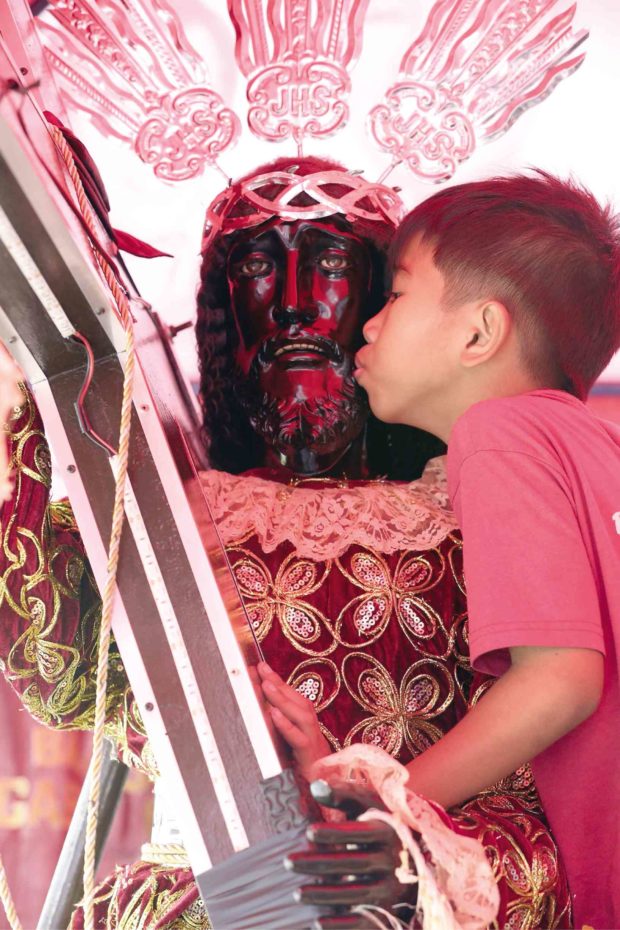Cagayan de Oro Nazarene expected to draw 120,000

The original image of the Black Nazarene in Quiapo, Manila, is revered all year. —NIÑO JESUS ORBETA
CAGAYAN DE ORO CITY — This city, one of the few areas outside Quiapo in Manila recognized by the Catholic Church as official hosts of the Feast of the Black Nazarene, has prepared security measures for the Black Nazarene feast, which had drawn hundreds of thousands in past years.
Since a huge crowd was expected to converge at Jesus Nazareno Parish on Monday and Tuesday, the Northern Mindanao police said it would also be deploying police officers around the church and to areas where the “traslacion,” or procession, of the image of the Black Nazarene would take place.
The regional police, however, did not specify the number of law enforcers that would be assigned to secure the two-day feast.
120,000 devotees
The Black Nazarene procession here had attracted over 120,000 devotees in previous years.
Article continues after this advertisementAside from the “maximum number” of policemen and officers who would be assigned to secure places where Nazarene devotees were expected to converge, Northern Mindanao police director, Chief Supt. Timoteo Pacleb, said police would also deploy drones in all strategic areas “for us to monitor movements on the ground.”
Article continues after this advertisementThe Armed Forces of the Philippines, Pacleb said, is also on alert.
But the use of drones by private individuals would be restricted and those wishing to get aerial shots of the devotees have to ask permission from the police or the city government, according to city information officer Maricel Rivera.
Original route
For this year’s procession, the organizers decided to go back to the original route of the Black Nazarene, which would start from St. Augustine Metropolitan Cathedral and would end up at Nazareno church. The procession would start at 5 a.m. on Jan. 9 and was expected to last for at least two hours.
Mayor Oscar Moreno had issued Executive Order No. 003, which banned alcoholic drinks within a 300-meter radius from the route of the procession.
The Black Nazarene replica here, which was touted to contain pieces of the original statue in Quiapo, was believed to perform miracles. —Jigger Jerusalem